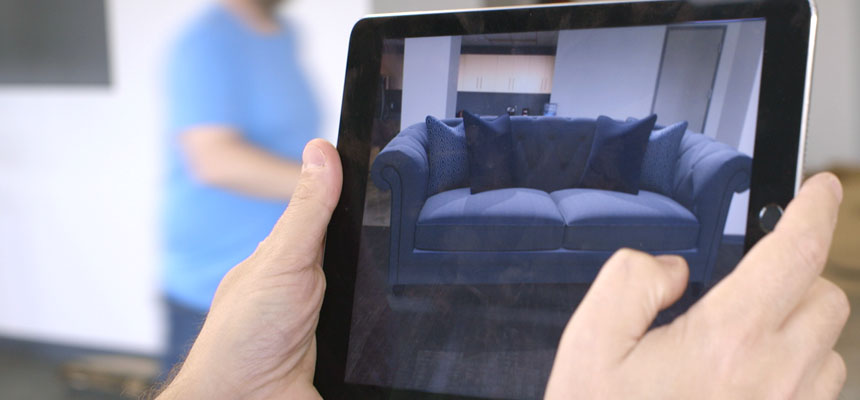Welcome to another edition of What We’re Reading, Marxent’s weekly series featuring staff members highlighting the best articles, videos, music and more they saw over the prior 7 days. This week, those finds included stories from the The New York Times, Upload VR, Tech Crunch, The New Yorker, ZD Net, Southwest The Magazine (!) and many more. Up first, it’s …
The Best Thing We Read This Week …
The Playstation VR was a hot topic this week, after Sony revealed it had sold 915,000 HMDs since the product launched in October. That’s more than the Oculus Rift (250,000 units) and HTC Vive (420,000 units) combined, and the success of PSVR has surprised even Sony — as detailed in this New York Times article shared by Marxent Marketing Creative Director Joe Johnson. The article puts Sony’s sales in perspective by pointing out: “In contrast, during the iPhone’s first three months on the market in 2007, nearly 1.4 million units were sold, and it is considered to be among the most successful technology products of all time.”
So the PSVR is a runaway, world-changing success, right? Not so fast. Forbes contributor Paul Tassi took another look at Sony’s numbers, for a piece entitled “How Impressive Are Sony’s ‘Surprise’ PlayStation VR Sales, Really?” As you may be able to tell from the tone of his headline, Tassi’s answer isn’t nearly as cheery as the Times. At one point he wonders if we’re “looking at a lizard through a telescope and thinking it’s Godzilla.” In the end, Tassi says “… that 915,000 figure equals a less than 2% attach rate to its 53+ million PS4s sold. Sony says they’ll be happy if that creeps up into the high single digits, but will it? We are over the initial launch burst of sales, and the more time goes on, the more PS4s will be sold as well, so PSVR attachment would really have to pick up the pace to hit that mark.”
We’ll label this debate “to be continued” …
The Best Books We Read This Week …
Marxent Project Manager Patrice Hall has been limbering up her brain with Lean from the Trenches, by Henrik Kniberg. “Trenches is a guide to applying agile practices to real-world projects. I see agile and lean as a way to apply design principles to the way we work, and I love the way these practices empower individuals and teams to collaborate in the best way for them,” Patrice explains. “You can see the effects here at Marxent — our Agile Scrum practice is of the things that builds our culture. Lean from the Trenches has given me new ways of looking at teamwork, organization of projects and problem solving.”
Meanwhile, Senior UX Manager Josh Williams has been completing his annual re-read of Information Anxiety II, by Richard Saul Wurman. “While it was originally published in 1989, Wurman’s insights into human information overload and recommendations regarding information architecture continue to be relevant,” Josh says. “I review it annually to make sure I always stay focused on the fundamentals of how people ingest information. His insights are actually integrated into the structure of the book, including adding ‘distractions’ in the margins of the pages, allowing for more organic modes of thought. It’s a great read, year after year.”
Marxent In The News …

Marxent itself was in the news quite a bit this week. Up first, we officially took the wraps off our proprietary Markerless Augmented Reality tech for retailers, manufacturers and homebuilders. In a piece for Furniture Today, writer Alex Milstein called Marxent’s Markerless AR “a huge step toward the future.” We agree!
The Dayton Business Journal took an interesting look at Marxent spin-off Magnetic Mobile. “We’ve developed some great ideas and now we’re running with them,” Magentic president said Geoff Pattison told the Business Journal. “Everyone is trying to figure out how to bring mobile into their advertising,” Pattison said. “It’s the place where people are going more than ever and mobile is eclipsing Web.”
Finally, there was also a story from McKinsey & Co. titled, “The boom in retail tech.” Written by McKinsey Fast Growth Tech’s Ken Fenyo, who serves as Head of Consumer Markets, the piece covers Fenyo’s experience at this year’s National Retail Federation’s Big Show in NYC, and his experience checking out VR tech at the Marxent booth. “I was surprised how immersive the experience was – I even walked into a real-world wall when I forgot I wasn’t actually in the virtual room (don’t tell anyone),” Fenyo writes.
But wait, there’s more …
Apple has been rumored to be working on some kind of Augmented Reality solution for a while now. (CEO Tim Cook can’t stop talking about it, which tends to fuel speculation.) Then this week, reports surfaced that The Big Fruit already has 1,000 engineers working on AR in Israel and a new product may appear on this year’s iPhone. Could the product be some kind of AR glasses? Hard to tell, but Apple definitely has our attention.
Marxent Sales Director Marcus Athari shared what he called, “An interesting article on the massive VR user gender gap brought to light by a study conducted by HTC in China.” That piece, “Report: Vive Users Are 95 Percent Male And Spend 5 Hours Per Week” and published in UploadVR reveals a staggering gender disparity in VR adoption, though explanations are few. A link within the article will take you to other interesting metrics gleaned from the report, so go form your own opinions.
Are you sexually harassing your smartphone? The Advice Goddess explores a recent article in Quartz that says just that.
Google figures out how to make VR headsets vanish — and the results are sorta creepy.
The most forward-thinking sports league in the U.S.? It’s probably the NBA, which is getting high-tech with VR, drones and futuristic dreams.
Did the Oscars just prove that we are living in a computer simulation? (Short version: No, it didn’t.)
Attention Movie-watchers: Here’s everything coming to Netflix in March.
And Finally …
Good stories can come from anywhere, which is why I wasn’t completely shocked to find myself tearing through a longish piece about a guy webcaming his front lawn that was published in Southwest The Magazine. Yes, that’s “Southwest” as in Southwest Airlines. Who knew the inflight magazine was even online? But it is, and the piece “Searching For Mr. Grass,” by Bradford Pearson is a must-read. It tells the story of “Mr. Grass” (aka Alek Komarnitsky), a former systems administrator and a founding member of the Rocky Mountain Internet User Group in the late 1980s. Mr. Grass first put up his webcam in 2002 to monitor his drought-scourged lawn while on vacation. And then something happened … people couldn’t stop watching his site. But why? The story that follows is a fascinating trip into the psyche of the average Internet user.












